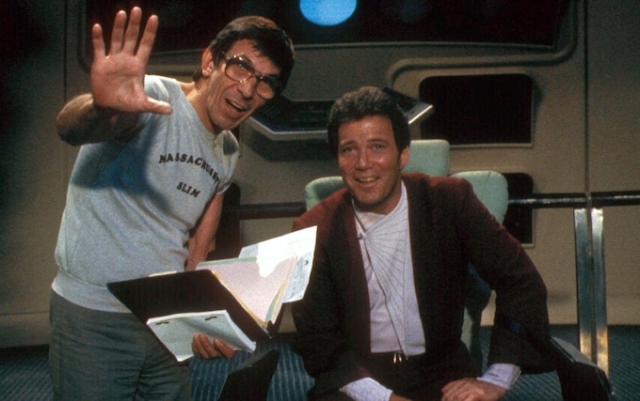 Leonard Nimoy with William Shatner on the set of The Search for Spock Photo: Alamy
Leonard Nimoy with William Shatner on the set of The Search for Spock Photo: Alamy
Captain Kirk didn't think Mr. Spock could control the ship. More specifically: William Shatner doubted Leonard Nimoy would direct Star Trek III: The Search for Spock. He wasn't sure whether Nimoy, a first-time feature film director, could handle the job.
There were other caveats, too. The dynamic with Nimoy, his co-star and subordinate on the bridge, had changed. “My friend suddenly became my boss,” Shatner recalled.
Shatner also expressed concerns about the script — a “chilly adventure” — and asked to meet with Nimoy and writer-producer Harve Bennett. He was ready to walk away from the film.
For Leonard Nimoy, directing was a condition for returning as Spock. The character was killed off—albeit with a few caveats—in the previous, highly acclaimed sequel, Star Trek II: The Wrath of Khan (“Haaaan!”). To Nimoy's credit, Star Trek III: The Search for Spock never feels like the sham it ultimately is, reversing the galaxy-shaking failure of Spock's death so that Star Trek can live long and prosper at the box office.
It's sometimes tainted by the oft-repeated adage that odd-numbered Trek movies are a bunch of old Klingon excrement. But Star Trek III is the connecting chapter of the main Star Trek movie trilogy of films two, three and four, linking the critical favorite Star Trek II: The Wrath of Khan with Star Trek IV: The Voyage Home. the most successful film with the original team.
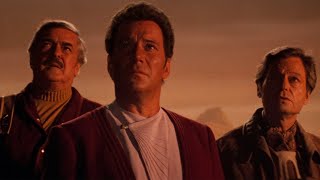
“This is the middle child [of the series],” says Larry Nemechek, host of The Trek Files podcast. “He's the one with the famous big brother and the amazing little brother. It's the one in the middle who did the heavy lifting and helped the story move forward.»
Star Trek III: The Search for Spock — which has now returned to UK cinemas to celebrate its 40th anniversary — did more , than simply resurrected Spock. It was a Trek-verse trendsetter and gave Kirk one of his greatest dramatic moments (“You Klingon bastard!”). And in true Trek form, he caused controversy among Trekkists by destroying another big name: the USS Enterprise.
Contrary to popular belief, Leonard Nimoy did not hate Spock—and he certainly did not advocate Spock's death. However, he had a difficult relationship with the character. And Nimoy didn't really like the first Star Trek film, Star Trek: The Motion Picture, released in 1979. “By then I felt like I had shot Spock’s ears for the last time,” Nimoy wrote.
It was Harve Bennett who came up with the idea of Spock's death in Star Trek II. “Leonard, if you come back,” he said. «I'm going to give you the greatest death scene since Janet Leigh in Psycho.»
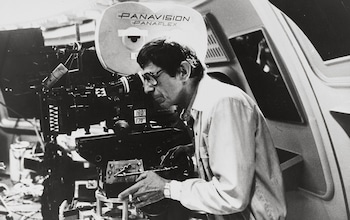 In the Hot Seat: Nimoy to Direct » Star Trek III» Photo: Album/Alamy Stock Photo
In the Hot Seat: Nimoy to Direct » Star Trek III» Photo: Album/Alamy Stock Photo
The grand death—Spock sacrificing himself to radiation to save his crew—was too tempting. But Bennett came from television — he was always looking for the next episode. Bennett suggested that Spock, before going to his death, perform a quick «mind meld» — a Vulcan psychic link — with Dr. McCoy (DeForest Kelly) and tell him to «remember» (for reasons yet to be explained). After the test screenings, Bennett also inserted the final shot of Spock's coffin, sent into space, standing among the dense forests of the newly created Genesis Planet — a world grown with life-creating technology.
Nimoy was deeply moved to see Spock's death. In his second memoir, Nimoy admitted that he felt «participant in his death… The guilt was terrible.»
Nimoy, however, was surprised by the added shot of Spock's coffin. He knew a call from Paramount was imminent. Harve Bennett received a similar call. Just days after the release of The Wrath of Khan—at the time the biggest opening weekend ever—Paramount boss Michael Eisner called Bennett and encouraged him to start writing Star Trek III. “The fastest green light for any project I’ve ever received,” Bennett said. There were obvious themes to capture. “The Search for Spock wrote itself,” Nemechek says.
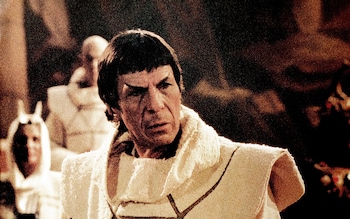 Leonard Nimoy as Spock in Star Trek III: The Search for Spock Photo: Everett Collection Inc/Alamy Stock Photo
Leonard Nimoy as Spock in Star Trek III: The Search for Spock Photo: Everett Collection Inc/Alamy Stock Photo
In the film, Kirk must recover Spock's body and bring it to the planet Vulcan along with his katra — the living spirit of a Vulcan — which was transferred to McCoy through a mind meld. At the same time, the Genesis Planet is developing and evolving at a dangerous rate and is declared a forbidden zone — so Kirk hijacks the Enterprise to get there. Part of the fun is that Kirk, by this point an admiral, just can't resist the adventure. Meanwhile, Spock is reborn as a child on the Genesis Planet, but like the planet, he quickly ages. He reaches his painful Vulcan puberty in a matter of hours.
Nimoy was more seduced by directing than by money. Both Nimoy and Shatner had plans to make Star Trek since the original series in the 1960s, but both were turned down. But when Nimoy told Paramount executives he wanted to make Star Trek III, they were enthusiastic, but weeks passed and they heard nothing. Nimoy eventually called Michael Eisner, who decided he couldn't have a director who hated Star Trek. Eisner thought Nimoy wrote Spock's death into his Wrath of Khan contract.
The common misconception that Nimoy hated Spock arose in part from his first memoir, I Am Not Spock (corrected by his second memoir, I Am Spock). Nimoy met with the studio boss in what Nimoy called a “dramatic confrontation.”
Nimoy told him: “In my opinion, you have two problems. You want Leonard Nimoy to play Spock in Star Trek III, and you need a director for that movie. I can offer you a solution to both of these problems or neither. It's so simple.»
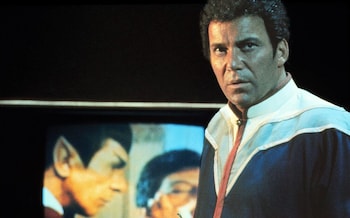 William Shatner and Nimoy didn't always see eye to eye. Photo: Cinematic/Alamy Stock Photo
William Shatner and Nimoy didn't always see eye to eye. Photo: Cinematic/Alamy Stock Photo
Star Trek creator Gene Roddenberry wasn't thrilled with the idea. He told Paramount, «Well, you hired a director you can't fire.»
Roddenberry had a rocky relationship with the Star Trek films. As Nemechek explains, he was essentially «demoted» to executive consultant after the dull first film. Roddenberry was kept on board mainly to appease die-hards and «to keep the fans calm,» Nemechek says. “He was perhaps the loudest, most demanding executive consultant in the world.”
Roddenberry wrote notes and gave feedback on creative decisions. He admitted that he didn't like the films' direction and leaked details to use fan votes as weapons against the producers. Star Trek fans have been campaigning and opposing creative decisions long before the advent of social media, starting with a letter-writing campaign to prevent the TV show's cancellation in 1967. «The DNA of Star Trek fandom is resistance,» says Nemechek.
Nimoy was hurt by Roddenberry's initial reaction and was later surprised to learn that his Enterprise crewmates weren't entirely thrilled from his direction. “People were just wondering what it would be like to suddenly have a director from their background,” Nemechek says.
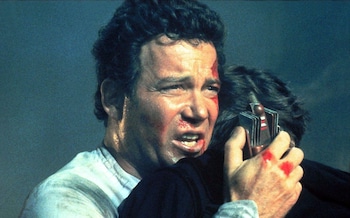 'I'm the showrunner': Shatner in Star Trek III Photo: Cinematic/Alamy Stock Photo < p>Shatner had a bit of an ego from the start of Star Trek, too. The two barely spoke for the last few years of Nimoy's life. («We don't have that relationship anymore,» Nimoy said in one of his last interviews.)
'I'm the showrunner': Shatner in Star Trek III Photo: Cinematic/Alamy Stock Photo < p>Shatner had a bit of an ego from the start of Star Trek, too. The two barely spoke for the last few years of Nimoy's life. («We don't have that relationship anymore,» Nimoy said in one of his last interviews.)
Nemechek explains that when Star Trek came out in 1966, television actors were still built around «the main character, the second banana, and everyone else.» This was before ensemble casts became a television standard. He continues: “Spock's popularity came unexpectedly and confused Shatner. I don't want to say it was jealousy, but he said, «Guys, I'm the host of the show, remember?» At the same time, Nimoy was like, “Look at my fan mail! Look how much attention I'm getting!»
This led to the so-called «favorable nations» agreement, in which Shatner and Nimoy received equal treatment. If one person's salary is increased, the other will do the same, and so on. It also led to Shatner directing a Trek film himself, 1989's Star Trek V: The Final Frontier.
However, in Star Trek III, Nimoy wanted every member of the crew to have a moment: DeForest Kelly as McCoy, George Takei as Sulu, Nichelle Nichols as Uhura, Walter Koenig as Chekov and James Doohan as Scotty. Nimoy took inspiration from his Mission: Impossible days and assigned each crew member the role of Enterprise hijacking specialist.
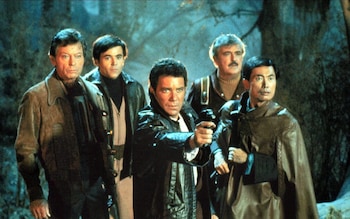 Ensemble: Some of the USS Enterprise crew Credit: Cinematic/Alamy Stock Photo
Ensemble: Some of the USS Enterprise crew Credit: Cinematic/Alamy Stock Photo
In one scene, Kirk and Sulu rescue McCoy, who — under the influence of Spock's katra — is sent to a «Federation funny farm» (by the 23rd century, sensitivity to mental health has clearly weakened). George Takei was unhappy that one of the security guards called Sulu «tiny» — he complained that the fans did not accept the insults towards Sulu. But when Takei saw the finished film, he had to admit he was wrong. The crowd roared with approval as Sulu turned the guard over and told him, «Don't call me tiny.»
Also joining the cast is Christoper Lloyd, who brings some Doc Brown energy to Klingon villain Kruge. Lloyd was then best known for his role in the sitcom Taxi, and studio bosses were concerned about the comedian's casting. The Klingons do sometimes feel like they're being played for laughs. Watch the moment one Klingon accidentally destroys a starship with a misguided laser beam. “Lucky shot, sir,” he jokes. Kruge, with a pet lizard dog monster by his side, vaporizes the Klingon joker.
But, as Nemechek says, it's the crucial image of the Klingons as «swaggering Viking bikers.» This is only the second time the alien warriors have appeared with the ridged foreheads that were added for the first film. “Star Trek III became the template for the Klingons, just like all the other movies and TV shows,” Nemechek says. “There was so much going on in The Search for Spock that it became standard Star Trek—it has these important landmarks.”
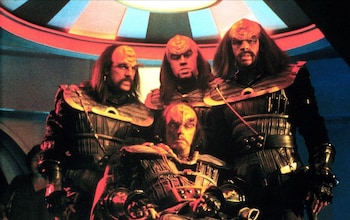 'Main landmarks': Klingons played villains in the film Author: AJ Pics/Alamy Stock Photo < p>Indeed, this is the first time that Klingons fly on the Bird of Prey ship (a hangover from the fact that the villains in the film were supposed to be the pointy-eared Romulans — the original Birds of Prey pilots). This is also the first appearance of the Federation Space Dock and the USS Excelsior. The Excelsior is the starship's latest upgrade, and the Enterprise is about to be decommissioned. Scotty sabotages the Excelsior's enhanced transwarp drive, the 23rd century equivalent of tampering with the drive. But Excelsior still hovered around the periphery of the film's biggest controversy: Kirk blowing up the Enterprise to kill some Klingons.
'Main landmarks': Klingons played villains in the film Author: AJ Pics/Alamy Stock Photo < p>Indeed, this is the first time that Klingons fly on the Bird of Prey ship (a hangover from the fact that the villains in the film were supposed to be the pointy-eared Romulans — the original Birds of Prey pilots). This is also the first appearance of the Federation Space Dock and the USS Excelsior. The Excelsior is the starship's latest upgrade, and the Enterprise is about to be decommissioned. Scotty sabotages the Excelsior's enhanced transwarp drive, the 23rd century equivalent of tampering with the drive. But Excelsior still hovered around the periphery of the film's biggest controversy: Kirk blowing up the Enterprise to kill some Klingons.
Before The Wrath of Khan, information was leaked that Spock would die (the leak was through Gene Roddenberry's secretary), causing outrage and even death threats. This time, Harve Bennett insisted on strict security measures: double-locked offices, script pages provided on a need-to-know basis, and code names for the production. The scripts were also chemically treated so that copies could be traced back to the original owner.
But information about the destruction of the Enterprise was leaked. The reaction wasn't quite on the level of «if Spock dies, so will you,» but fans were upset.
Adding to the controversy was visual effects supervisor Ken Ralston, who stated that he wanted to «take a hammer to» the Enterprise model, which was bulky and difficult to shoot. He decided to blow up a smaller version. “I always said I hated this ship,” Ralston told Cinefex. “I’m telling you, it was wonderful: Boom! Goodbye!»
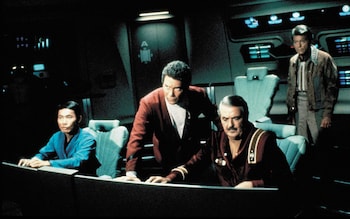 «Boom!» “Farewell!”: The Search for Spock featured the scandalous destruction of the Enterprise Photo: Album/Alamy Stock Photo
«Boom!» “Farewell!”: The Search for Spock featured the scandalous destruction of the Enterprise Photo: Album/Alamy Stock Photo
Shatner recalled that Paramount took advantage of free PR for the Enterprise controversy — the destruction of the Enterprise even appeared in one of the television trailers. “The powers that be at Paramount simply sat back, smiled, and rode the wave, milking the controversy for every soundbite they could squeeze,” Shatner wrote.
Shatner was also told some fun behind-the-scenes stories. Costume designer Robert Fletcher told Cinefantastique that Shatner needed 12 shirts: “He's dieting for the movie and he looks amazing. But along the way he slipped.”
Robert Justman, co-producer of the original series, reported a similar problem back in the '60s — as the season progressed, «the top of [Shatner's] pants and the bottom of his tunic moved inexorably away from each other as they got smaller and he got bigger.» Star Trek creator Gene Roddenberry sent notes about Shatner's weight gain, and in season three, Shatner went on a crash diet after seeing himself in the daily newspapers.
But Star Trek III gave Shatner what Shatner himself said might have been Kirk's «best celluloid moment ever.» These Klingons can be stupid at times, but they are also ruthless, as proven when one of Kruge's warriors stabbed Kirk's son to death. Nimoy advised Shatner to play out the reaction the way he wanted. Kirk stumbles, moving away from the immediate injury, and falls. “You Klingon bastard, you killed my son,” he repeats.
“Somehow it never became a meme like “Khaaaaan” did,” Nemechek says.
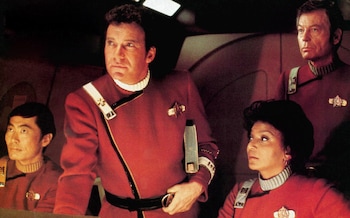 Heavyweight drama: Shatner was forced to go on a diet before filming began. Photo: Everett Collection Inc/Alamy Stock Photo
Heavyweight drama: Shatner was forced to go on a diet before filming began. Photo: Everett Collection Inc/Alamy Stock Photo
Kirk gets his revenge in another great moment, fighting Kruge on a not-quite-convincing volcanic clifftop. Shatner recalled using his classic moves. «A giant left-handed haymaker, a spinning back kick, two quick punches to the stomach, followed by a right to the jaw.»
As always, the intonation of Shatner's performance is imitable — random breaks and connections of words. «I. Had. Enough. You!» He says as he plunges Kruge into the lava.
The climax of Star Trek III is a little less action-packed. Returning his boat to Vulcan, Spock—now Leonard Nimoy again—recognizes Kirk. “Jim,” he says, “your name is Jim.” Perhaps more important is the film's parting message: «…and the adventure continues…»
Released on June 1, 1984, Star Trek III earned $87 million — not as much as Star Trek II, but still a success. Before the film even opened, Paramount asked Nimoy to make another. The next film was an even bigger triumph, Star Trek IV: The Voyage Home, a time-travel comedy-drama about rescuing humpback whales. Shatner’s attempt, Star Trek V: The Final Frontier — Kirk vs. God, was less successful.
“The Five is the one movie that everyone loves to play,” Nemechek says. He adds: “All movies, good or bad, have some notoriety. Star Trek III is the movie that kept its head down and did its job.”
Even Shatner, despite initial doubts, acknowledged that Nimoy succeeded in his mission as director of Star Trek III. «Leonard was absolutely brilliant,» Shatner wrote. «Kicked out that photo, that…» It may not be the best Star Trek movie, but it's a bold, logical way for the series to continue.
Star Trek III: The Search for Spock is in theaters now




































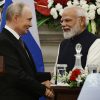



















Свежие комментарии